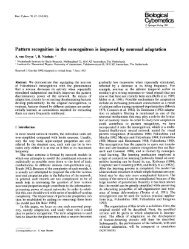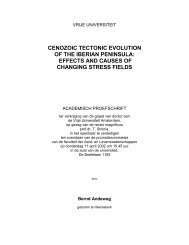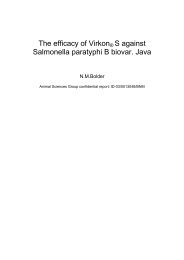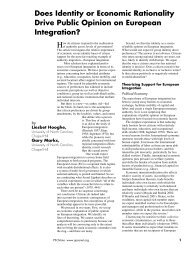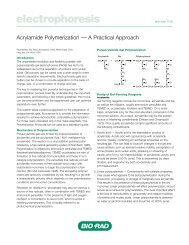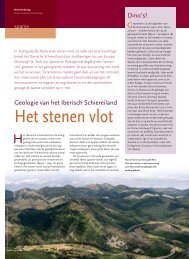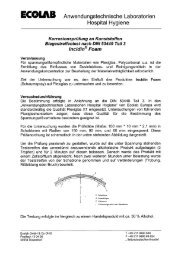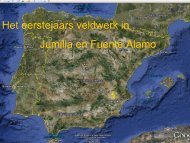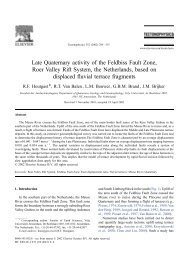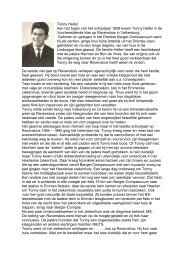5 NATURAL ABUNDANCE OF THE STABLE ISOTOPES ... - Falw.vu
5 NATURAL ABUNDANCE OF THE STABLE ISOTOPES ... - Falw.vu
5 NATURAL ABUNDANCE OF THE STABLE ISOTOPES ... - Falw.vu
Create successful ePaper yourself
Turn your PDF publications into a flip-book with our unique Google optimized e-Paper software.
Stable Isotopes of Hydrogen, Carbon and OxygenTable 7.3The stable isotopes of oxygen: practical data for the natural abundance, properties,analytical techniques and standards. Further details are given in Sect.7.2, and in Chapters10 and 11.MS=mass spectrometry16 O17 O18 Ostability stable stable stablenatural abundance 0.9976 0.00038 0.00205abundance rangein hydrological cycle15‰ 30‰reported as17 or 17 O18 or 18 Oin ‰ ‰instrument MS MSanalytical medium O 2 CO 2 or O 2usual standard deviation 0.05‰international standard . VSMOW for waterVPDB for carbonate etcwith absolute value VSMOW: 0.0020052VPDB: 0.00206727.2.2 OXYGEN ISOTOPE FRACTIONATIONSThe isotope effects to be discussed are within the system H 2 O (vapour) H 2 O (liquid) CaCO 3 . The equilibrium fractionation values have been determined by laboratoryexperiments. Fig.7.1 shows some actual isotope ratios. Fig.7.10 and Table 7.4 present asurvey of the temperature dependent equilibrium isotope effects.Equilibrium fractionations determined in the laboratory are also found in nature. The moststriking observation is that the carbonate shells of many molluscs appear to have been formedin isotopic equilibrium with seawater. The palaeotemperature scale as presented by Eq.7.18was presented by Epstein et al. (1953) (cf. Friedman & O'Neil, 1977). This relation is deducedfrom 18 O measurements on carbonate laid down by marine shell animals at knowntemperatures and water isotopic compositions. These data lost the original interpretation ofthe temperature dependence of the s/l by the later realisation that the major oceanicpalaeotemperature effect is the change in 18 of seawater –and, consequently of carbonateformed in this water- by the formation viz. melting of enormous ice caps on the poles duringor after ice ages.103



